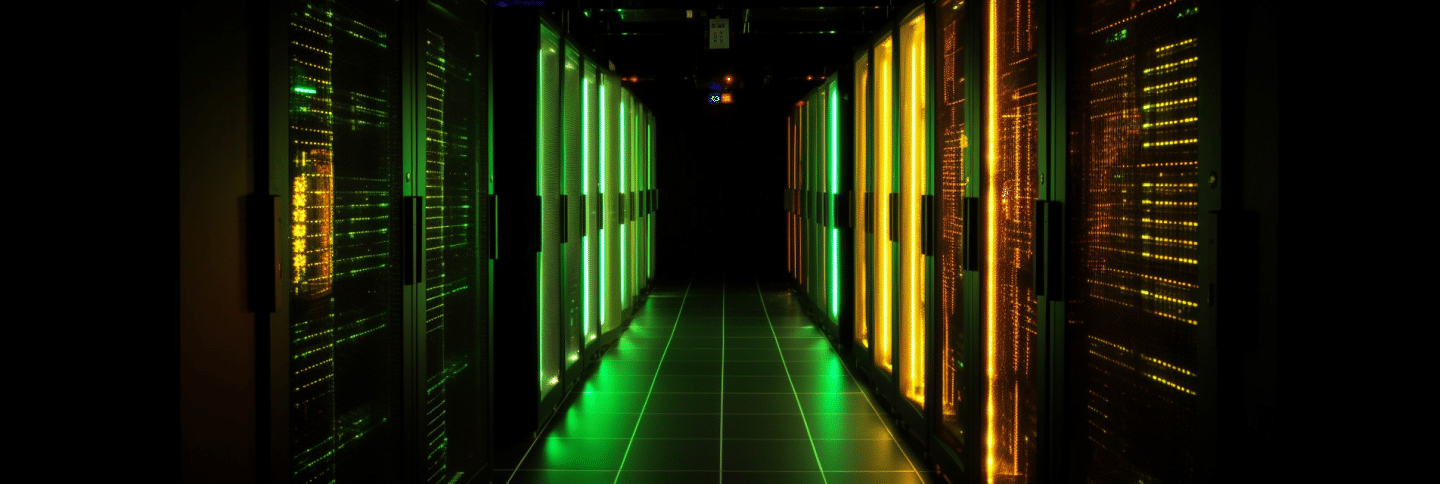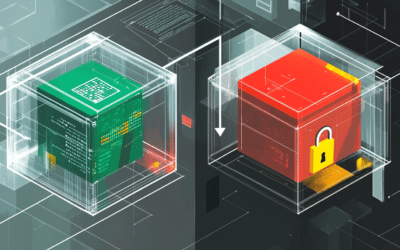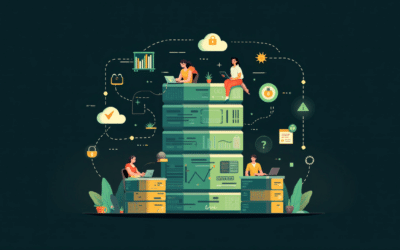
Common Errors in IT Environment & Platform Rationalization
JUL, 2023
by Jane Temov.
Jane Temov is an IT Environments Evangelist at Enov8, specializing in IT and Test Environment Management, Test Data Management, Data Security, Disaster Recovery, Release Management, Service Resilience, Configuration Management, DevOps, and Infrastructure/Cloud Migration. Jane is passionate about helping organizations optimize their IT environments for maximum efficiency.
Efficiently managing and optimizing the IT environment and platform is crucial for organizations seeking to enhance performance, reduce costs, and drive overall operational effectiveness. However, without a well-defined process and awareness of potential challenges, IT rationalization efforts can be complex and prone to mistakes.
Enov8 IT & Test Environment Manager
*Innovate with Enov8
Streamlining delivery through effective transparency & control of your IT & Test Environments.
In this article, we will explore the most common errors encountered in IT environment and platform rationalization and provide practical strategies to avoid them.
Mistake 1: Lack of Clear Objectives
When embarking on application rationalization, one of the most critical mistakes is not having clear objectives and goals. It is essential to determine the primary reasons for engaging in rationalization, which typically revolve around optimizing costs and enhancing performance.
Deciding whether cost optimization or performance improvement takes priority is vital in making informed decisions. For instance, if your team is using an expensive application that offers only marginal benefits compared to a cheaper alternative, the choice to retain the current application or downgrade to a more cost-effective option depends on your goal of optimizing cost or performance.
In most cases, organizations aim to optimize both cost and performance simultaneously. Establishing performance and cost targets allows you to strike the right balance and make trade-offs in the appropriate areas.
Regardless of the specific objective, having a well-defined goal is crucial for making difficult decisions during application rationalization. Without a clear goal, you risk being caught in a cycle of uncertainty and struggling to find alignment.
To ensure all stakeholders work towards the same targets and facilitate change management, it is crucial to publish your metrics and objectives. This transparency promotes accountability and enables everyone involved to understand the rationale behind previous decisions. Having accessible references to these targets allows you to align future decisions with the overall goal of your application rationalization efforts.
By setting clear objectives and sharing them with stakeholders, you create a focused direction for your rationalization initiative and avoid aimless, unproductive efforts.
Mistake 2: Inadequate Assessment of Current State
One of the significant mistakes in IT & Test environment and platform rationalization is not conducting a thorough assessment of the current state. Without a comprehensive understanding of the existing IT infrastructure, applications, and their dependencies, organizations may overlook critical factors that can hinder the rationalization process. This can result in missed opportunities for optimization, increased costs, and potential risks.
To address this challenge, organizations can turn to Enov8 Environment Manager, a powerful solution that offers automated surveys and data gathering capabilities. By leveraging Enov8, organizations can collect and analyze vital information about their IT landscape in a structured and efficient manner. The platform allows for the centralized storage of key data points, enabling a holistic view of the current state of the IT environment and platform.
Enov8 Environment Manager’s streamlines the process of collecting essential data, including infrastructure details, application inventory, performance metrics, utilization rates, dependencies, and interconnections. This automated approach saves time and reduces the likelihood of human errors often associated with manual data collection.
Once the data is gathered, Enov8 provides robust analytical capabilities that allow organizations to gain valuable insights into their current state. The platform enables the identification of inefficiencies, redundancies, and areas for improvement within the IT environment and platform. Armed with this comprehensive understanding, organizations can make informed decisions regarding application rationalization, prioritize initiatives, and develop a strategic roadmap for optimization.
Mistake 3: Lack of Stakeholder Buy-In
Even with a well-defined roadmap and objectives in place, obtaining buy-in and alignment from stakeholders is crucial for successful application rationalization. The process can become highly complex, particularly when dealing with numerous applications and involving stakeholders from different departments across the organization.
To address this challenge, it is essential to establish a clear framework for decision-making and accountability. This is where creating a comprehensive responsibility assignment matrix (RACI) becomes instrumental. By assigning roles for each application, including those who are responsible, accountable, consulted, and informed, you create a structured approach to decision-making.
However, it’s important to note that the involvement of application owners, who come from various departments, is paramount. To ensure their support, provide them with clear guidance and a set of criteria to facilitate decision-making. This guidance should include project metrics and goals, specific recommendations for each application, rationale behind the decisions, drawbacks of not approving the decisions, criteria to consider, budgetary and timescale considerations, and the support provided for outages and staff retraining.
To promote transparency and facilitate collaboration, this guidance should be user-friendly, easily accessible to all stakeholders, and stored in a publicly accessible location. By making RACI information and the criteria readily available, you create a clear and transparent framework for decision-making. This enables stakeholders to align their perspectives and expectations, ensuring a smoother and more effective application rationalization process.
By addressing stakeholder buy-in and providing the necessary guidance and criteria, you establish a foundation of trust, clarity, and shared responsibility. This significantly enhances collaboration, minimizes surprises, and ensures a higher likelihood of success in your application rationalization efforts.
Mistake 4: Insufficient Data and Metrics
Another common mistake in application rationalization is the lack of sufficient data and metrics. Data serves as the foundation for informed decision-making and effective planning, making it a critical component of the rationalization process. Without accurate and comprehensive data, organizations may struggle to understand their current state, assess performance, prioritize initiatives, and evaluate the success of rationalization efforts.
Let’s reflect on the solutions to the previous mistakes:
- Clear goals: Data is essential for understanding the current state and identifying gaps between the existing and desired goals. Without data, organizations cannot accurately assess where they stand or define realistic goals for rationalization.
- A roadmap: Developing a roadmap requires data to inform decisions about which applications to prioritize, dependencies, and the expected timeline for implementation. Without data, organizations would be navigating blindly, unable to make informed choices in the rationalization journey.
- Timescales: Creating realistic timescales relies heavily on understanding the complexity of the tasks, resource availability, and the effort required for rationalization. Data provides insights into these factors and allows organizations to set achievable timelines.
- Logged ownership for each application: Identifying application ownership is dependent on data that captures information about usage, responsibilities, and relationships within the IT environment. Without data, it becomes challenging to determine who owns each application and assign the necessary responsibilities.
Data empowers decision-making and planning, and it is the most important element in application rationalization. It enables organizations to identify inefficiencies, determine cost savings, uncover performance bottlenecks, and make strategic choices.
To address this mistake, organizations can leverage an enterprise architecture management (EAM) platform like Enov8 Environment Manager. This platform serves as a centralized repository, collating data from various sources and providing a single source of truth. Enov8 allows organizations to collect, store, and analyze data related to the IT environment, applications, dependencies, costs, and performance metrics.
By leveraging Enov8’s EAM platform, organizations can make data-driven decisions, develop insights, and create a comprehensive overview of their application portfolio. They can identify areas for improvement, evaluate the impact of rationalization efforts, and ensure that their decisions align with their goals and objectives.
In conclusion, data plays a crucial role in application rationalization. It provides the necessary information to make informed decisions, establish realistic goals, create roadmaps, define timescales, and determine application ownership. By utilizing an EAM platform like Enov8 Environment Manager, organizations can effectively gather, analyze, and leverage data to drive successful application rationalization initiatives.
Mistake 5: Inadequate Timeline Management
One of the common mistakes in application rationalization is the lack of a well-defined timeline. Without a clear timeline, the rationalization process may become stagnant, with tasks lingering as backlog items indefinitely.
To ensure progress and avoid delays, each step of the rationalization process should have a realistic timeline for completion. Establishing specific deadlines allows for proper allocation of responsibilities and resources, ensuring that the rationalization efforts move forward in a timely manner.
It’s important to note that not every deadline may be met as planned, and that’s normal in complex projects. However, without a set timeline in place, the rationalization process is more likely to encounter roadblocks and fail to make significant progress.
Publishing the timeline and sharing it with stakeholders is crucial to maintaining accountability and keeping everyone involved informed of the project’s progress. This transparency ensures that all stakeholders understand their roles and responsibilities, promotes collaboration, and helps identify potential bottlenecks or delays. By incorporating the timeline into the overall roadmap, organizations can effectively manage and monitor the rationalization process.
In addition, an enterprise architecture management (EAM) platform like Enov8 Environment Manager can greatly assist in timeline management. The platform provides features to track and visualize the progress of each rationalization step, allowing organizations to monitor milestones, deadlines, and overall project timelines. With Enov8, stakeholders can stay updated, collaborate effectively, and address any potential deviations from the planned timeline, ensuring a smoother and more successful application rationalization process.
Mistake 6: Neglecting Change Management
One of the crucial mistakes often made in IT environment and platform rationalization is neglecting change management. Organizations may inadvertently prioritize technical aspects of the rationalization process while overlooking the significant role of change management in ensuring successful outcomes. Neglecting to address employee concerns, provide support, and facilitate smooth transitions can lead to resistance, low adoption rates, and ultimately, the failure of the rationalization effort.
Enov8 Environment Manager serves as a valuable tool in helping organizations overcome this mistake by offering robust features that support change management, IT service management and stakeholder engagement. With Enov8, organizations can effectively communicate the rationale behind the rationalization initiatives, addressing stakeholders’ concerns, and providing guidance and support throughout the entire transition process.
By utilizing Enov8, organizations can create a positive and collaborative environment that fosters buy-in and engagement from stakeholders. The platform enables organizations to clearly articulate the reasons behind the rationalization efforts, demonstrating the benefits and value it brings to the organization and individual stakeholders. This transparent communication helps alleviate uncertainties and resistance, encouraging stakeholders to actively participate and contribute to the rationalization process.
Furthermore, Enov8 Environment Manager provides the necessary tools for providing ongoing support to stakeholders during the transition. It offers features that facilitate knowledge transfer, training, and resources to help individuals adapt to the changes resulting from the rationalization efforts. By guiding stakeholders through the transition and addressing their needs, organizations can ensure a smoother and more successful rationalization process.
Conclusion
By avoiding these common mistakes, organizations can navigate the complexities of IT environment and platform rationalization more effectively. Clear objectives, thorough assessment of the current state, stakeholder engagement, data-driven decision-making, and proactive change management are key elements for successful rationalization efforts. Embracing these strategies enables organizations to optimize their IT environment and platform, drive efficiency, and position themselves for future growth and innovation.
Relevant Articles
Enterprise Architecture Tools: 11 to Be Aware Of in 2025
Enterprise architecture (EA) is an essential discipline for organizations aiming to align their IT strategy with business goals. As companies become more complex and technology-driven, having the right set of EA tools is crucial to streamline operations, improve...
What is a Staging Server? An Essential Guide
Release issues happen. Maybe it’s a new regression you didn’t catch in QA. Sometimes it’s a failed deploy. Or, it might even be an unexpected hardware conflict. How do you catch them in advance? One popular strategy is a staging server....
What is Deployment Planning? A Detailed Guide
Deployment planning, sometimes referred to as "implementation planning," is the process of creating a plan for the successful deployment of a new software or system. It involves identifying the resources, tasks, and timeline needed to ensure that the deployment is...
The Definitive Guide to Test Data Generation
Test data generation is a critical part of the software testing lifecycle, ensuring that applications are tested against realistic scenarios before going live. If you’re not testing against production-like data, you’re arguably not truly testing your application. In...
What is a Test Data Manager? A Detailed Introduction
Testing is a critical aspect of software development, and it requires the use of appropriate test data to ensure that the software performs optimally. Test data management (TDM) is the process of creating, storing, and managing test data to ensure its...
How to Manage Test Data in Software Testing
To compete in today's market, software companies need to create programs that are free of bugs and vulnerabilities. In order to accomplish this, they first need to create test data models specifically for staging environments. Test data sets must be compact,...











